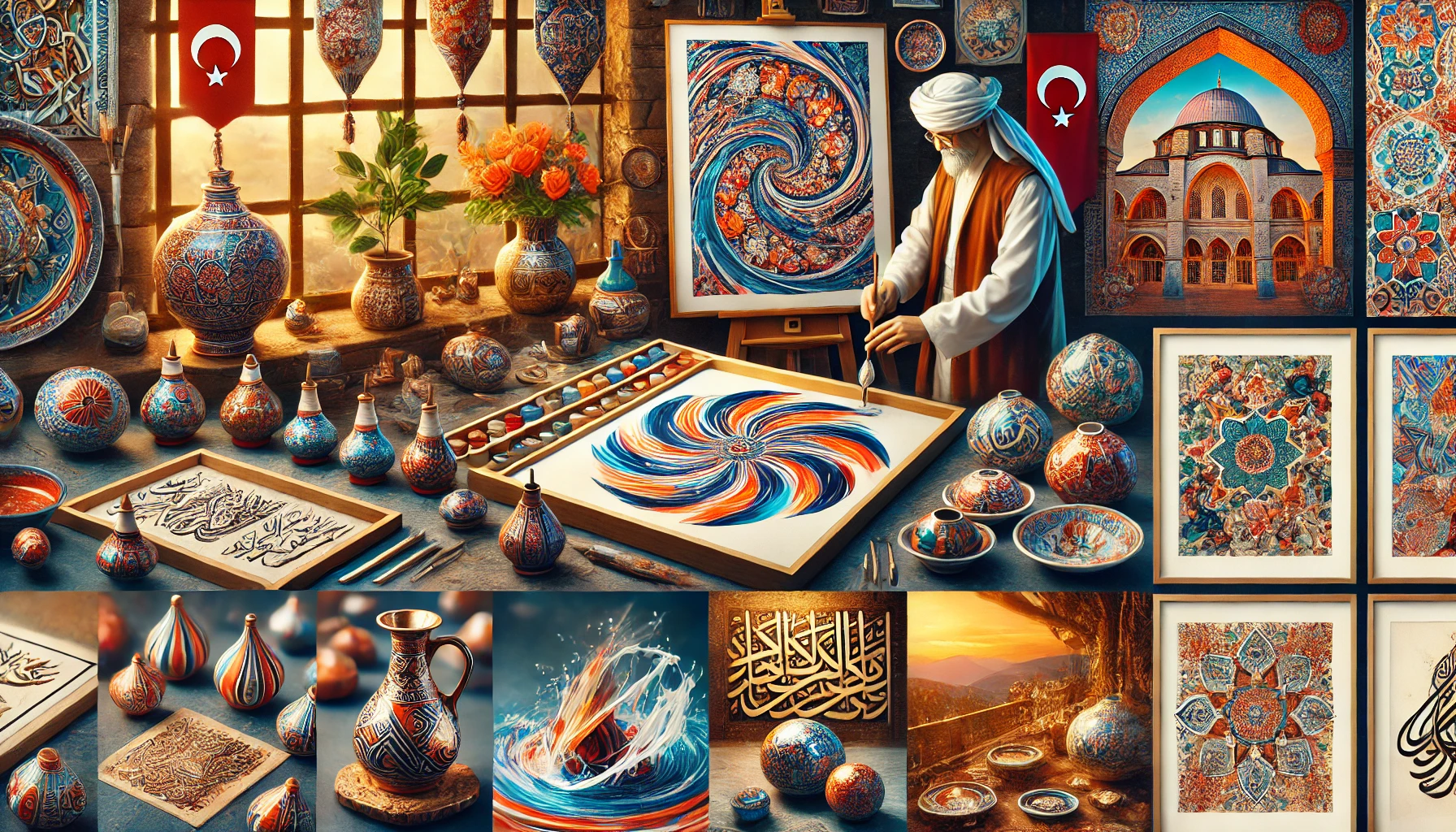The Rich Heritage of Turkish Fine Arts and Handicrafts
Fine arts, which have been produced since mankind’s earliest days, are an integral part of Turkish culture. Traditional fine arts and handicrafts such as ebru (marbling), hat (calligraphy), çini (chini), and ceramics, in addition to photography, are essential elements of Turkish culture and have evolved over time. Art enthusiasts can explore many works of fine art and handicrafts at a variety of museums and galleries throughout Turkey.
Traditional Turkish Fine Arts and Handicrafts
Ebru (Marbling)
Ebru, also known as marbling, is a traditional Turkish art form that involves creating patterns on water using natural pigments and transferring them onto paper or fabric. This art form is characterized by its swirling, organic patterns that resemble marble. Ebru is often used to decorate book covers, stationery, and various textiles.
Hat (Calligraphy)
Hat, or Turkish calligraphy, is a highly esteemed art form in Turkish culture. It involves the artistic writing of Arabic script, primarily for religious texts. The beauty of hat lies in its intricate and fluid designs, which often incorporate geometric and floral patterns. Calligraphy is commonly seen in mosques, manuscripts, and decorative panels.
Çini (Chini) and Ceramics
Çini, or Turkish ceramics, are renowned for their vibrant colors and intricate patterns. Originating from the town of Iznik, these ceramics are often decorated with floral and geometric motifs and are used to adorn mosques, palaces, and homes. The tradition of Turkish ceramics continues today, with modern artisans creating both traditional and contemporary designs.
Photography: A Modern Artistic Expression
Photography has become an important part of Turkish art culture, capturing the country’s diverse landscapes, architecture, and daily life. Turkish photographers are known for their ability to blend modern techniques with traditional subjects, creating powerful and evocative images.
Exploring Turkish Fine Arts and Handicrafts
Museums and Galleries
Turkey is home to numerous museums and galleries that showcase the country’s rich artistic heritage. Some notable places to explore Turkish fine arts and handicrafts include:
- Topkapi Palace Museum: This historic museum in Istanbul houses a vast collection of Islamic calligraphy, ceramics, and other fine arts from the Ottoman period.
- Istanbul Modern: A contemporary art museum that features modern Turkish art, including photography and other visual arts.
- Museum of Turkish and Islamic Arts: Located in Istanbul, this museum displays a wide range of Islamic art, including calligraphy, textiles, and ceramics.
- Sakıp Sabancı Museum: This museum in Istanbul has an extensive collection of calligraphy and illuminated manuscripts.
Artisans and Workshops
In addition to museums and galleries, visitors can experience Turkish fine arts and handicrafts firsthand by visiting local artisans and workshops. Many cities, including Istanbul, Iznik, and Konya, have vibrant artisan communities where traditional techniques are preserved and taught.
Conclusion
The rich heritage of Turkish fine arts and handicrafts reflects the country’s deep cultural roots and artistic excellence. From the intricate patterns of ebru and hat to the vibrant designs of çini and ceramics, these traditional art forms continue to inspire and captivate art enthusiasts. Modern photography also plays a significant role in capturing the essence of Turkish culture. Whether explored in museums, galleries, or artisan workshops, Turkish fine arts and handicrafts offer a fascinating glimpse into the nation’s artistic legacy.
Latest Update: May 22, 2015
Your Content Goes Here
A brief summary of the key points in this article.




